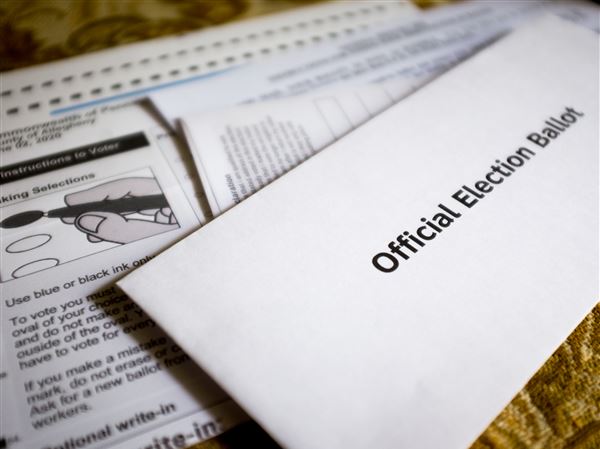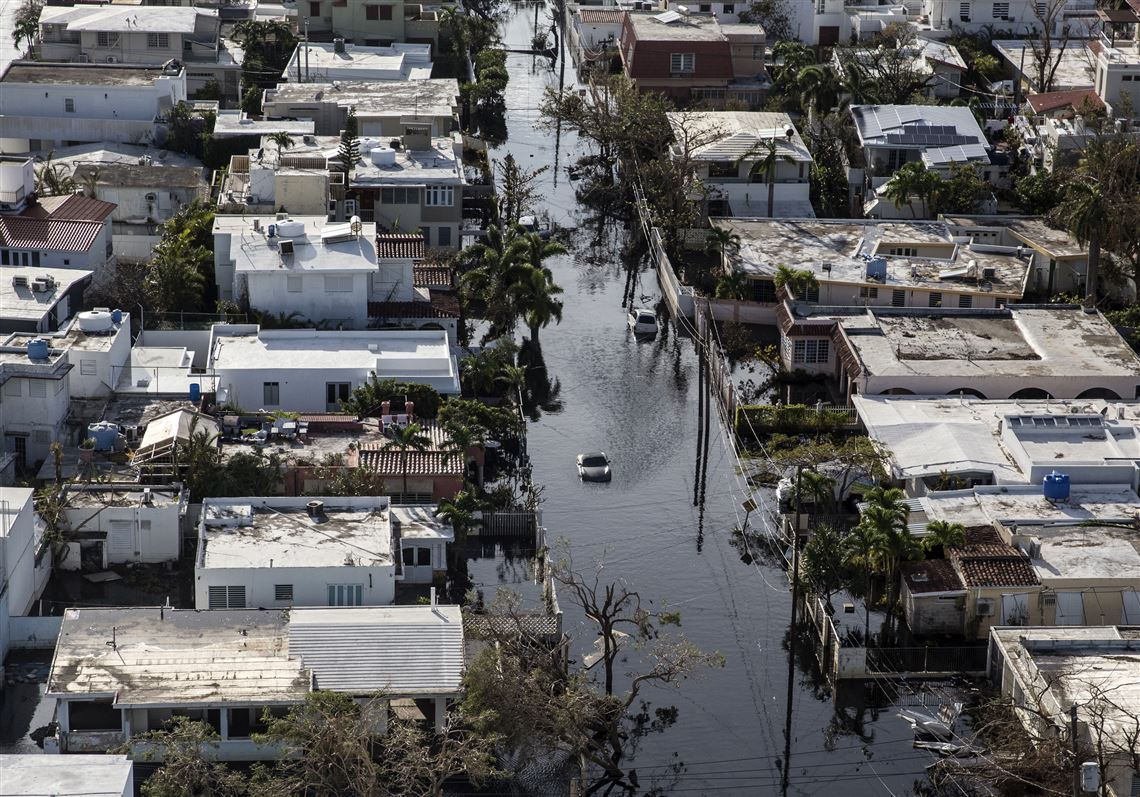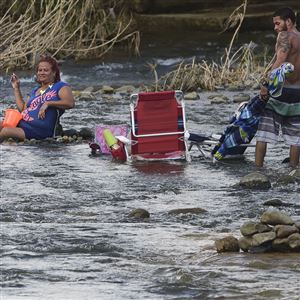For Caribbean islands plunged into darkness after Hurricanes Irma and Maria, more resilient, small-scale electric systems powered by the sun are looking increasingly attractive.
“For the most part, these island grids were completely devastated, and it will be four to six months before most of them can power their islands completely again,” said Chris Burgess, director of projects for the Islands Energy Program at the Rocky Mountain Institute.
Transforming a grid, though, doesn’t come cheap.
In making the case for so-called microgrids, environmental nonprofit Rocky Mountain Institute pointed to solar installations on the Turks and Caicos islands that remained largely intact while the local utility reported more than 1,200 poles down. That was the case on Richard Branson’s Necker Island, too. Even Bruce Walker, the nominee to lead the Energy Department’s electricity office, hailed Puerto Rico’s devastated grid as an opportunity to test technologies that’ll make it more resilient to storms.
“You look at islands like Dominica, Anguilla and the other islands affected by the recent hurricanes, I’ve spoken to a couple of the utilities, and they say they would prefer to rebuild using distributed generation with storage, and just trying to reduce the amount of transmission lines,” said Tom Rogers, a renewable energy expert at Coventry University in Britain who previously was a lecturer in energy at the University of the West Indies in Barbados. “Because that’s where their energy systems fail. It’s having these overhead cables.”
Even in good weather, islands like those in the Caribbean have an energy problem: They’ve tended to burn fossil fuels, such as diesel or heavy fuel oil, to drive centralized power plants. But being an island without its own fossil energy resources makes shipping in the fuel quite expensive - in turn translating into sky-high electricity bills - to say nothing of the environmental costs incurred by burning it.
“They have energy prices which are some of the highest in the world,” Rogers said. “And that has a massive economic impact, especially as a lot of these islands’ economic dependence is on tourism, which introduces a high energy demand for their hotels, in particular from air conditioning loads.”
The catch is the price tag. By Rocky Mountain Institute’s estimates, it would cost roughly $250 million to build about 90 megawatts of solar and storage across a chain of Caribbean islands. That’s enough to power an estimated 15,000 U.S. homes. While it may be sufficient for the Turks and Caicos, about a million households live in storm-battered and debt-ridden Puerto Rico.
Sure, there’s a lot of interest in small-scale power systems now, said Yayoi Sekine, an energy storage analyst for Bloomberg New Energy Finance. “But without state support or external funding, it’s very difficult to actually see community microgrids flourish or have any investment at all.”
Also, at least until battery storage becomes more widely affordable, islanded grids could not solely be powered by the sun, which is only out during the day. They would instead need to alternate solar with some continuing use fossil fuels to ensure a continual electricity supply. Still, adding renewables would lessen dependence on burning a fuel that has to be continually replaced - which in turn means that it must be continually shipped to the island.
Some funding efforts are under way. Earlier this month, the Energy Department said it was awarding as much as $50 million to its national laboratories to research technologies that would make the nation’s power grids more resilient. And even before Irma and Maria came along, the Rocky Mountain Institute had the hopes of leveraging $300 million in financing for energy projects on islands by 2020.
The islands’ existing infrastructure has been “completely destroyed, so in terms of building back, we have a clear strategy to build back 100 percent renewable,” Justin Locke, director of the institute’s Islands Energy Program, said by phone.
Renewables alone won’t solve the region’s problem. Puerto Rico’s rooftop solar owners can attest to that.
Sunnova Energy Corp., the U.S. territory’s largest rooftop solar-power supplier, has no idea whether its 10,000 systems survived back-to-back hurricanes this month. And even if they did, the panels wouldn’t be able to power customers’ homes, John Berger, the company’s chief executive officer, said in an interview Thursday.
That’s because rooftop panels rely on the local power system to deliver electricity, even if the power is just going to the customer’s house. And with Puerto Rico’s energy infrastructure out of commission, possibly for months, Sunnova’s panels aren’t able to help.
“It was devastating,” Berger said. “The distribution system was destroyed.”
That’s where batteries come in. Microgrid advocates say small systems that run on solar panels backed up by energy storage could help prevent widespread blackouts by steering dependence away from the antiquated, centralized systems islands now depend on.
The Islands Energy Program is working with 10 otherwise diesel-hungry Caribbean islands to develop energy plans, analyze the economics and identify the stakeholders to make projects market-ready. Someone still has to finance the initiatives, but since the hurricanes there’s been interest in adding to relief efforts, Locke said.
Statia Utility Co., the electricity and water provider for the Caribbean island of St. Eustatius, already generates about 23 percent of its power from a solar park primarily funded by the Dutch Ministry of Economic Affairs. The grid-tied installation had been hardened for Category 4 hurricane-strength winds, so it was unscathed by Irma and Maria, said Fred Cuvalay, the utility’s chief executive officer.
Even Cuvalay acknowledged that solar panels aren’t invincible. In aerial photos, Puerto Rico’s solar panels showed damage. Wind turbines were snapped like twigs.
“Some of the islands were not as fortunate because their panels blew away,” Cuvalay said by phone. “Those islands that lost panels shouldn’t go back. They should be determined to construct it in a sturdy way.”
Some lessons here can actually be learned from Alaska. While not an island, it contains many remote communities, and so has been a testing ground for the deployment of hundreds of microgrids - smaller grids that can connect to a larger grid but also can operate independently of one - and for beginning to switch these villages from a strict reliance on burning shipped-in diesel fuel to more renewable resources.
“When we are facing the sort of infrastructure destruction we have seen this hurricane season, it only makes sense to give some pause before reinvesting in the exact same system that proved to vulnerable,” Gwen Holdmann, who directs the Alaska Center for Energy and Power at the University of Alaska at Fairbanks, said by email. Referring to Puerto Rico, she continued, “If the system were redesigned around microgrids incorporating local power production, there would still be losses, but the number and duration of outages due to severe weather events would decrease.”
However, the Trump administration may have other plans, at least as far as Puerto Rico and the U.S. Virgin Islands go.
For instance, Energy Secretary Rick Perry recently tossed out the idea of the potential for small modular nuclear reactors to be used in situations like the current disaster.
“Wouldn’t it make abundant good sense if we had small modular reactors that literally you could put in the back of C-17 [military cargo] aircraft, transport it to an area like Puerto Rico, and push it out the back end, crank it up and plug it in?” Perry said recently, according to Bloomberg BNA.
Some islands are already shifting - Jamaica has plans to convert diesel plants to natural gas.
The Washington Post contributed.
First Published: October 2, 2017, 8:30 a.m.

















